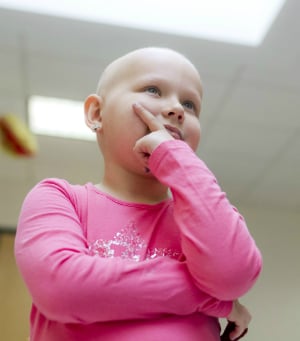
Quashing cancer: September is Childhood Cancer Awareness Month
6 September 2013
The Canadian Cancer Society designates September as Childhood Cancer Awareness month, a time to educate the public about pediatric cancers. Fifty years ago, almost all children diagnosed with cancer had little hope of survival. Because of research, today about 85% of kids with the most common types of cancer will go on to lead healthy, productive lives. However, not all forms of cancer are as well understood. Research is therefore the key to discovering more about how cancer behaves and how we can help cure it.
How cancer behaves
Most of us have relatively well-behaved cells. Cancer happens when some cells get out of control.
A normal cell knows how to grow and divide to make new cells, and knows when to stop and die. But a cancer cell isn’t normal. It grows and spreads quickly, and survives for a long time. Cancer cells can clump together to form a tumor. Not only can tumors grow to damage the part of the body where they start, they can also spread to other organs where they do even more damage.
Why is childhood cancer so different?
Children are not simply smaller adults. Some cancers almost never strike after the age of 5. Others occur most often in teenagers. Even when kids get cancers that adults get, like lymphoma, they must be treated differently.
There are also over a dozen types of childhood cancers, and countless subtypes, making it more challenging for researchers to find cures for every child.
Childhood cancer facts:
- There are about 10,000 children living with cancer in Canada today;
- Each year, about 1500 cases are diagnosed;
- Because of advances in therapy, 78% of these children will survive 5 years beyond their initial treatment, an increase of almost 46% since the 1960s;
- In the early 1950s, less than 10 percent of childhood cancer patients could be cured;
- Leukemias, tumors of the brain, nervous/lymphatic system, kidneys, bones and muscles are the most common childhood cancers;
- In Canada, childhood cancer remains responsible for more deaths from one year through adolescence than any other disease;
- Leukemia is the most commonly diagnosed cancer in children, comprising some 30% of the total new cases diagnosed each year.
Sources:
Childhood Cancer Canada http://www.childhoodcancer.ca/
St-Baldrick’s Foundation http://www.stbaldricks.org/about-childhood-cancer/
